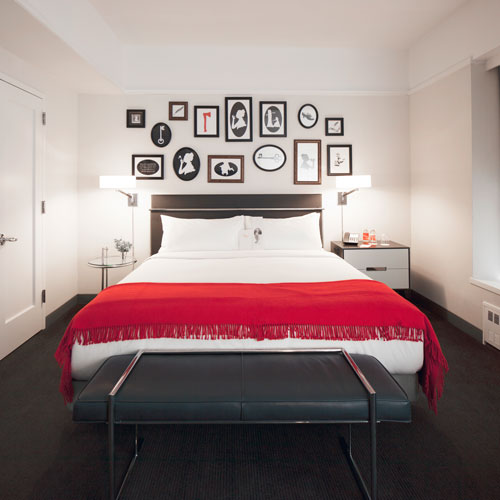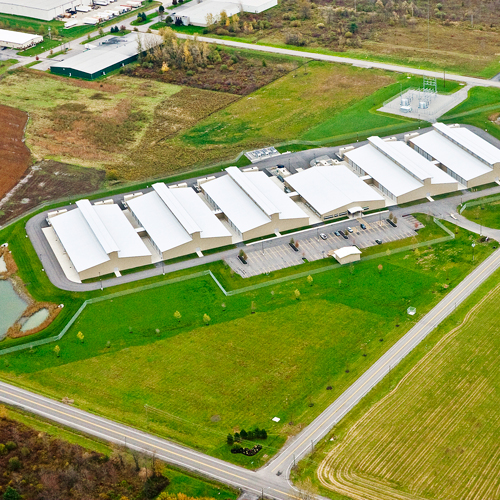Nike ranks 24th on Forbes’s list of the world’s most valuable brands, and its flagship San Francisco store, reopened in 2013 after an expansive renovation, illustrates why.
In 2012, Nike closed its seven-story, 50,000-square-foot Niketown store at 278 Post Street. It had been an anchor tenant in Union Square since 1997, but “it was tired and worn out because it’s such a high-traffic and high-volume location,” says Steve Bachman, president and CEO of Lake Elmo, Minnesota-based Retail Construction Services, Inc. (RCS). The company has long had a working relationship with Nike, and it was chosen to oversee the overhaul of the facility.

A major goal of the $20 million project was to amplify the Nike brand throughout the store. The company started out selling shoes, but it’s now the largest athletic-apparel company in the world and has, as of 2014, according to Forbes, an estimated $19 billion in brand value, stemming from both consumer sales and the private labeling of everything from golf clubs to NFL jerseys. “They wanted to ensure that the retail space reflected all that Nike is,” Bachman says.
To help with this, RCS connected the history of each sport represented in the store to the Nike brand. Now, when visitors are in the basketball area, for example, they see bleachers and wooden gymnasium flooring salvaged from a torn-down high school in St. Louis. On the fourth floor, a display case contains a collection of Nike shoes worn by professional basketball players from the time the company began selling basketball shoes. “By telling the story about where those elements came from, Nike promotes the evolution of the sport and the company’s role in it,” Bachman says.
Nike’s desire to be a design pioneer resulted in what Bachman calls “a truly magnificent space,” but actually getting there presented numerous challenges, the first of which was simply getting a plan in place. “The company has a huge design staff that is constantly looking for something new and unique, and as a result, from the time we got the first design deck until the time construction was completed, there were so many design iterations I can’t count them,” Bachman says.
During construction, one of the biggest difficulties turned out to be planning the transitions between floors. Prior to the renovation, escalators transported shoppers between the first five floors, which composed the retail space (the upper two levels being used for operations and warehousing), and RCS had to remove and reinstall all of these—along with several new ones. This process was also complicated by the fact that the company had to move an atrium from the third and fourth floors to a different pair of floors. “We had to work at night because during the day, you can’t easily navigate a densely populated urban environment like San Francisco with a 72-foot semi that has an escalator on it, then punch a hole in the side of the building with a crane, and those were the sorts of things that needed to be done,” Bachman says.

RCS also dealt with numerous structural problems during the build. “There were many times we had to pause so [that] we could figure out what to do so that the building would not collapse upon itself,” Bachman says. When the construction team drilled into concrete columns during its relocation of the atrium, for example, it found them filled with what looked like powdered sugar.
And, when the company removed a concrete topping thought to be eight inches deep, it turned out to only be three. “And we were supposed to store the existing 11.5-ton escalators there,” Bachman says. “We just couldn’t do it because the floor wasn’t structurally sound enough. If I put them there, they would have ended up in the basement of the building.”
The store, now called NikeSF, occupies a historic building in a historic district, and RCS also found itself in a deadline crunch when, four weeks prior to the project’s completion, the city rejected Nike’s plan’s to alter its building’s exterior façade. Normally, this would have necessitated 22 weeks of additional work, but Nike was running a media blitz around the upcoming San Francisco marathon, which it was sponsoring, and it wouldn’t move its launch date. So, RCS picked up the pace with its team, and the store still opened on time.
“It was a phenomenal undertaking,” Bachman says, “and if it hadn’t been for the commitment of everyone involved at this company and our subcontractors, there’s no way this job would have been done on time. They really bucked up.”


